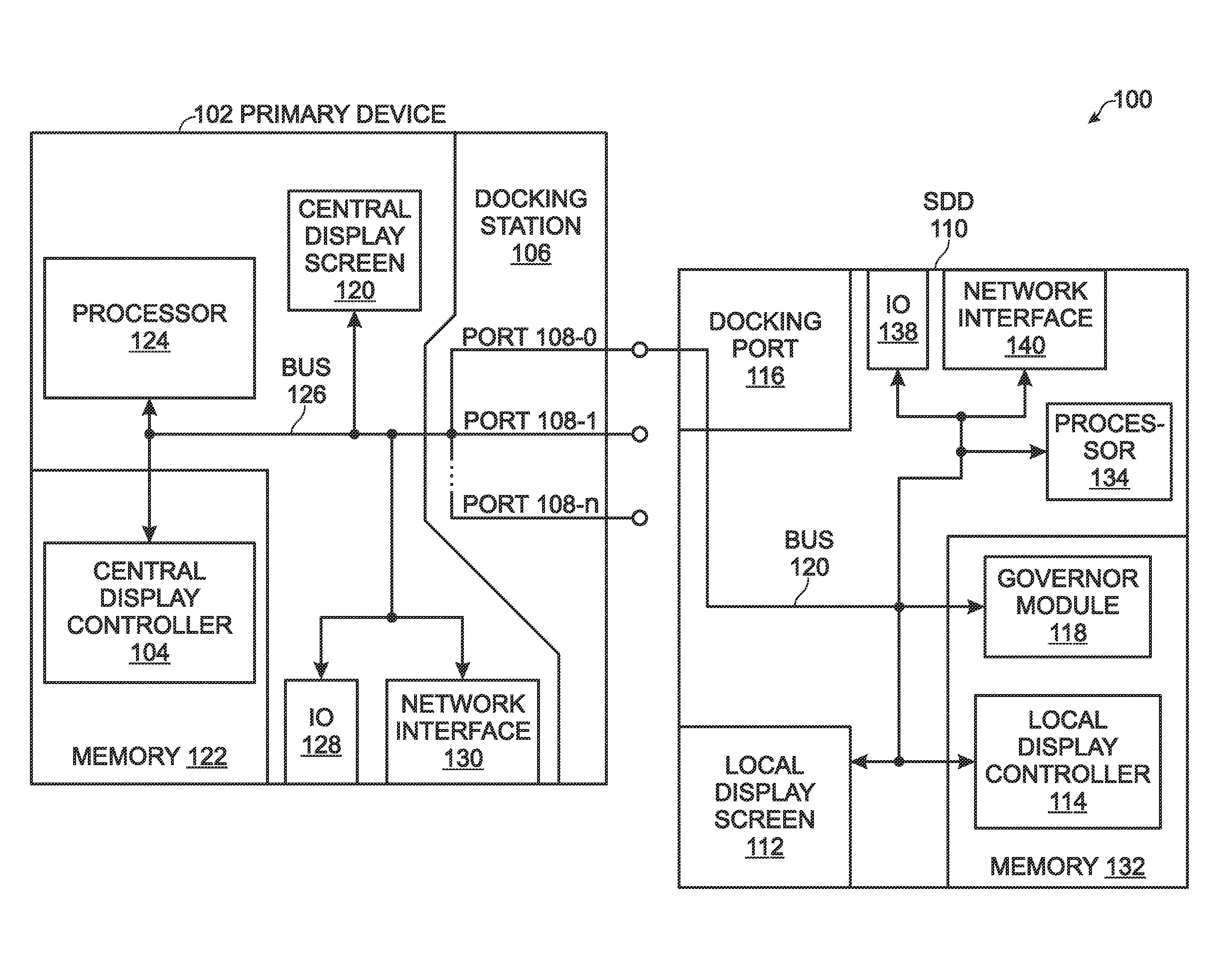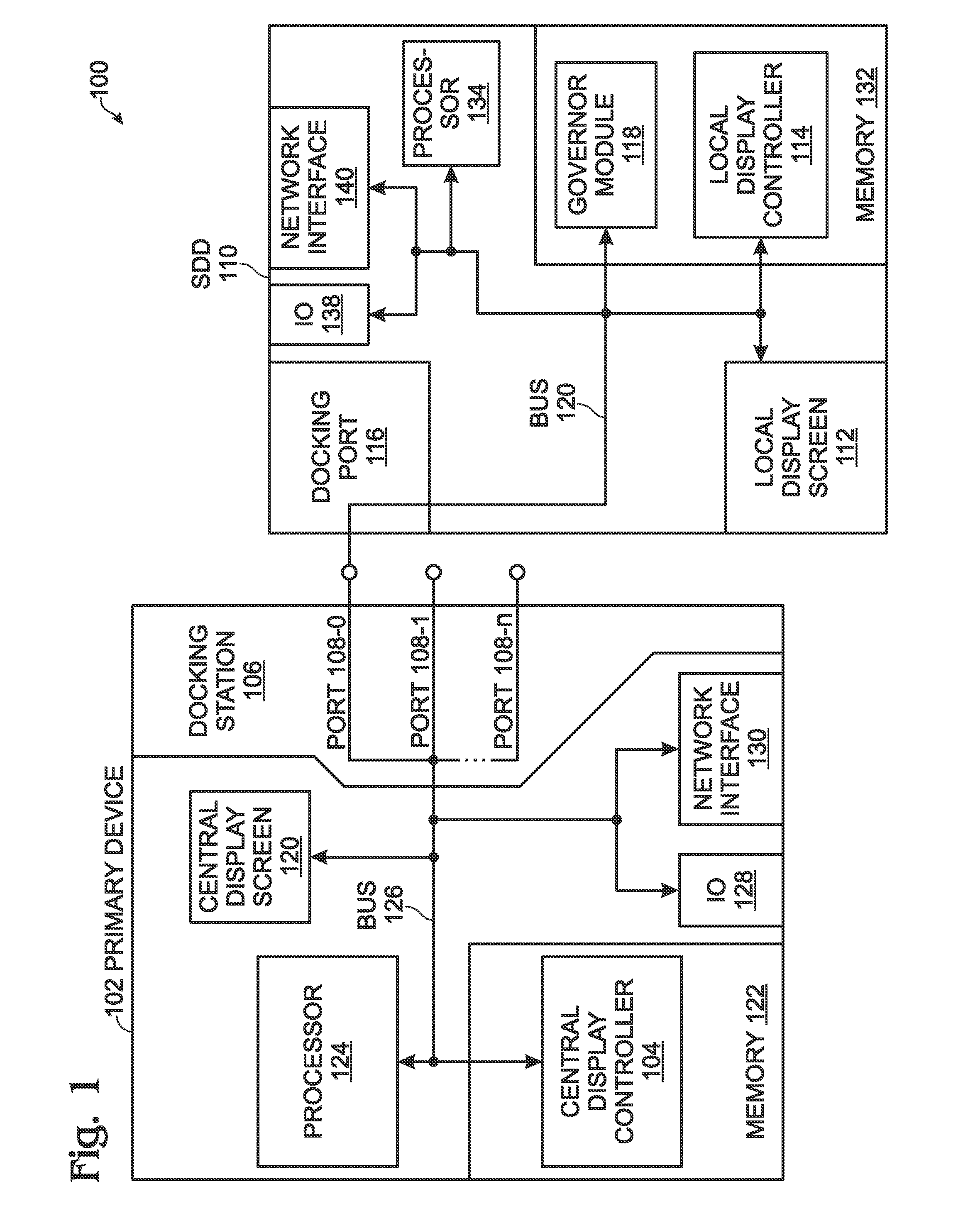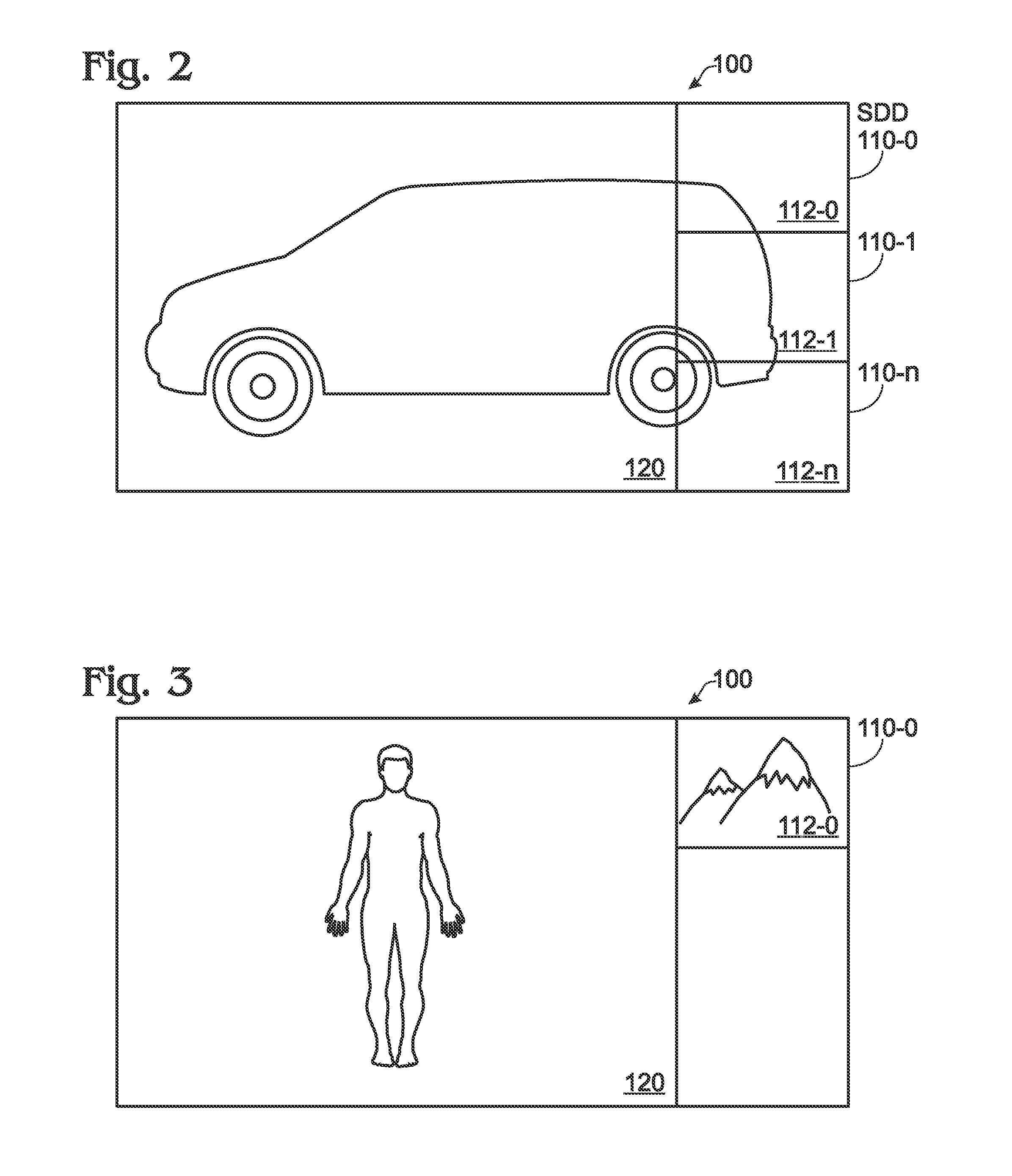Multi-Function Display with Selectively Autonomous Secondary Modules
a secondary module and multi-functional technology, applied in the field of large information displays, can solve the problems of poor compatibility and interoperability, increased complexity and difficulty of use, and poor reliability, and achieve the effect of maintaining the integrity of services available and improving ease of us
- Summary
- Abstract
- Description
- Claims
- Application Information
AI Technical Summary
Benefits of technology
Problems solved by technology
Method used
Image
Examples
Embodiment Construction
[0027]FIG. 1 is a schematic block diagram of a multi-function display with selectively autonomous secondary modules. The multi-function display 100 comprises a primary device 102. The primary device 102 includes a central display controller 104 for determining display functions and a docking station 106 with at least one docking port 108. Shown are docking ports 108-0 through 108-n, where n is an integer variable. Each docking port 108 selectively mechanically connects a secondary display device (SDD) 110 to the primary device 102. The docking port 108 also electrically connects a docked SDD 110 to the central display controller 104. As used herein, selectively connect means a connection that is designed for quick and easy engagement and disengagement, and also a connection that is designed to be repeatedly made and broken. In one aspect, the docking port and primary device are part of the same mechanical assembly. Alternatively, the docking ports are a separate mechanical structure...
PUM
 Login to View More
Login to View More Abstract
Description
Claims
Application Information
 Login to View More
Login to View More - R&D
- Intellectual Property
- Life Sciences
- Materials
- Tech Scout
- Unparalleled Data Quality
- Higher Quality Content
- 60% Fewer Hallucinations
Browse by: Latest US Patents, China's latest patents, Technical Efficacy Thesaurus, Application Domain, Technology Topic, Popular Technical Reports.
© 2025 PatSnap. All rights reserved.Legal|Privacy policy|Modern Slavery Act Transparency Statement|Sitemap|About US| Contact US: help@patsnap.com



